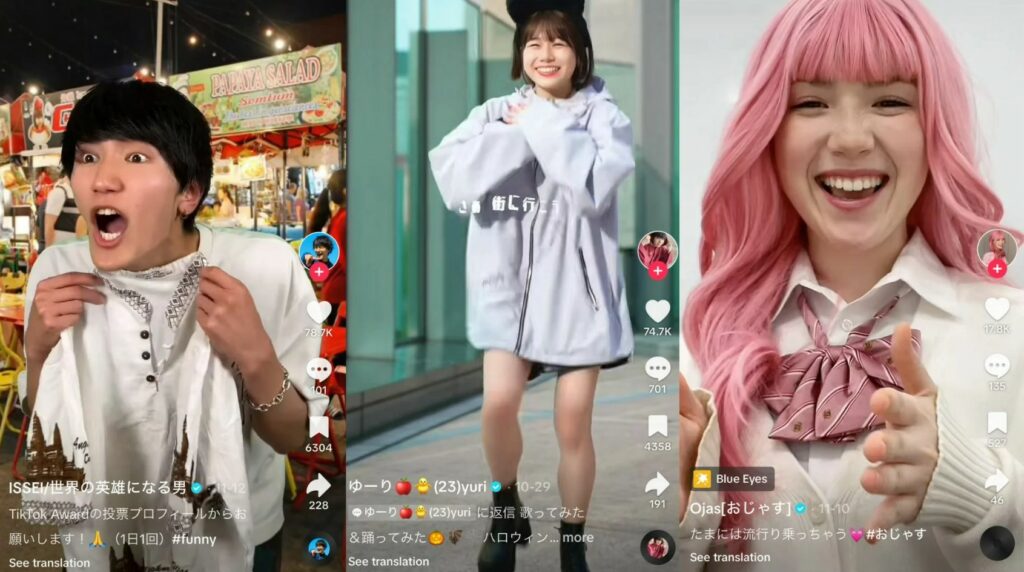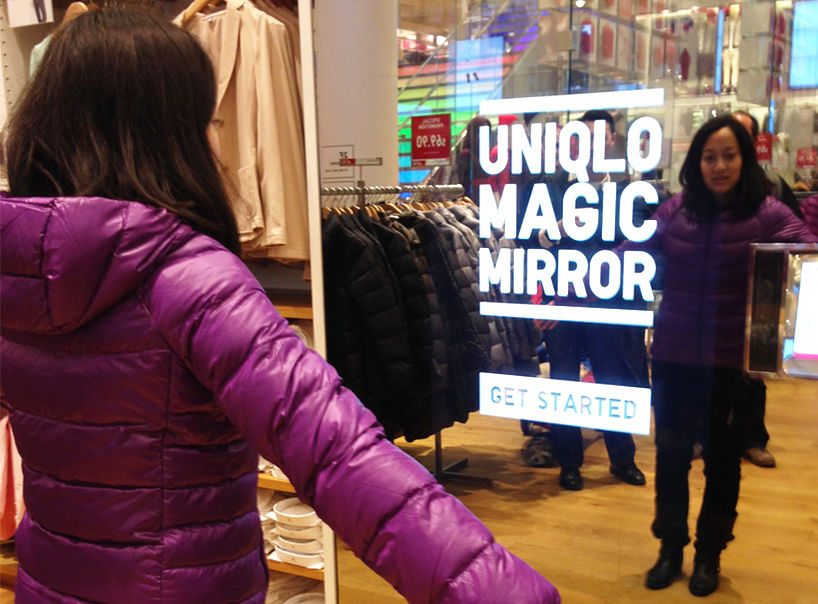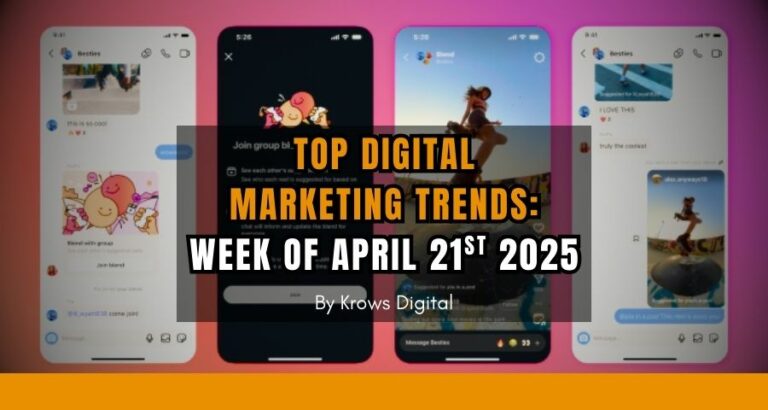The digital marketing landscape in Japan presents a unique blend of traditional values and cutting-edge technology. Understanding these nuances is crucial for any marketer looking to penetrate this vibrant market.
The Digital Consumer in Japan

Mobile Usage Trends
Japan is one of the leading countries in mobile connectivity, characterized by high smartphone penetration and advanced mobile technology. The mobile landscape in Japan is unique due to the country's quick adoption of new technologies and the consumers' willingness to engage digitally. Here's an insight into the current trends in mobile usage in Japan:
High Smartphone Penetration

As of my last update, Japan's smartphone penetration is among the highest globally, with over 90% of the population owning a smartphone. This widespread adoption has implications for businesses and marketers, who must prioritize mobile-first strategies to effectively reach their audience.
Preference for Mobile Internet
The majority of internet users in Japan access the internet via mobile devices. This trend has been accelerating with improvements in mobile network technology and the availability of high-speed mobile internet, such as 5G. Companies need to ensure their websites and online content are optimized for mobile to provide a seamless user experience.

Mobile Payments and E-commerce
Mobile payments are exceptionally popular in Japan, with a significant portion of the population using mobile wallets like PayPay, LINE Pay, and Rakuten Pay. This convenience has also boosted mobile e-commerce, as consumers find it easy to shop on their smartphones. The integration of mobile payment systems with online retail platforms and brick-and-mortar stores has created a more fluid shopping experience for consumers.
App Usage Behavior
Japanese mobile users are avid app users, with social media, messaging, entertainment, and utility apps seeing high engagement rates. Apps need to be tailored to local tastes and preferences to succeed in the Japanese market. For instance, gaming and manga apps are incredibly popular and tend to be customized for cultural relevancy.
Impact of Mobile Marketing
Due to the high engagement with mobile devices, mobile marketing is an effective channel for reaching consumers in Japan. Marketers leverage SMS, in-app advertisements, and mobile-optimized email campaigns to reach their audience. The success of mobile marketing campaigns often hinges on their optimization for the unique behaviors and preferences of the Japanese audience.
Popular Platforms and Apps
In Japan, the digital landscape is characterized by unique platforms and apps that are pivotal for any effective digital marketing strategy. Understanding the popularity and functionalities of these platforms can significantly enhance a marketer's ability to engage with the Japanese audience.

Line
Line is the leading social media platform in Japan, with extensive reach across various demographics. It's not just a messaging app but a comprehensive ecosystem that includes news, entertainment, and mobile payment functionalities. For marketers, Line offers tailored advertising solutions such as Line Ads Platform, which allows for targeted ads based on user behavior and preferences.

Japan is one of the largest markets for Twitter outside the United States. The platform is used widely for both personal and professional purposes. Twitter in Japan serves as a critical space for real-time communication and trending topics, making it an excellent tool for viral marketing campaigns and customer engagement.

While Instagram's growth in Japan was initially slower compared to other markets, it has gained substantial traction, especially among younger demographics who are attracted to its visual-centric content. Instagram is highly effective for brand storytelling and visual marketing, with opportunities for both organic engagement and paid advertisements.

TikTok
TikTok has seen explosive growth in Japan, particularly among teenagers and young adults. Its format of short, engaging videos makes it a powerful platform for creative digital marketing campaigns that can quickly gain widespread attention.

YouTube
YouTube remains a dominant force in online video consumption in Japan. It is not only a platform for entertainment but also a significant resource for informative content, making it ideal for long-form video marketing. YouTube ads are highly effective in Japan, offering various formats from skippable ads to non-skippable ads and banners.

Yahoo! Japan
Unlike in many other countries where Google dominates, Yahoo! Japan remains a major player in the Japanese internet landscape. It functions as a search engine, news portal, and digital advertising platform. Understanding how to optimize for Yahoo! Japan can be crucial for SEO and SEM strategies in the country.
For digital marketers targeting Japan, leveraging these platforms with a clear understanding of each platform's unique audience and features is crucial for crafting successful digital marketing strategies.
ready to take your business to the next level?
Get in touch today and receive a complimentary consultation.
E-Commerce in Japan
Key Players in the Japanese E-Commerce Market
Japan's e-commerce market is a dynamic and highly competitive environment, showcasing a variety of key players who have successfully adapted to the specific preferences and technological advancements prevalent in the country. Here are some of the most influential e-commerce platforms in Japan, along with their unique market strategies and consumer offerings.

Rakuten Ichiba
Rakuten, founded in 1997, stands as Japan’s largest e-commerce platform. Unlike typical marketplace models, Rakuten functions like a virtual mall where individual retailers can set up shop. This model offers a diverse range of products from electronics to fashion and groceries. Rakuten is renowned for its loyalty program, which incentivizes consumers with points that can be used across a wide network of services, including its mobile network and online banking. This ecosystem approach helps retain customers and encourage more frequent purchases.
Amazon Japan
Amazon entered the Japanese market in 2000 and has since become a major player in the e-commerce scene. It offers a vast selection of goods, from books and electronics to fresh groceries through its Amazon Fresh service. Amazon Prime services, including fast shipping, streaming, and exclusive deals, have also significantly contributed to its popularity. Amazon Japan’s efficiency in logistics and customer service has set a high standard in the industry, appealing particularly to consumers looking for reliability and speed.
Yahoo! Japan Shopping
Yahoo! Japan Shopping operates as a part of Yahoo! Japan's portal, one of the most visited websites in the country. This platform integrates with Yahoo! Japan's auction site and other services, creating a comprehensive shopping experience. It also benefits from strong brand recognition and a solid user base that frequents Yahoo! Japan for various online services, making it a formidable competitor in the Japanese e-commerce market.
Zozotown
Zozotown specializes in fashion and is operated by Start Today Co. It has established itself as a leader in the Japanese fashion e-commerce sector. Zozotown is known for its wide range of clothing options, catering to diverse consumer tastes and sizes. The platform gained further attention with its innovative ZOZOSUIT, a bodysuit designed to help customers find perfectly fitting clothes by capturing their body measurements with a smartphone app.
Mercari
Mercari is a popular consumer-to-consumer (C2C) marketplace that has gained a massive following in Japan. Launched in 2013, it allows users to buy and sell items from each other directly through the app. Its user-friendly interface and a strong focus on mobile use appeal to younger demographics. Mercari has also been proactive in addressing security and trust issues commonly associated with C2C transactions by implementing stringent measures to verify user identity and facilitate secure payments.
Each of these platforms exhibits distinct characteristics and strategies tailored to the Japanese market. Their innovations and adaptations to consumer preferences underline the dynamic nature of Japan's e-commerce landscape, highlighting the importance of technological integration and customer-centric services.
Trends in Online Shopping
Online shopping in Japan is distinguished by several unique trends that reflect the sophisticated preferences of Japanese consumers and the technological advancements of the market. The latest data highlights several key trends that are shaping the e-commerce landscape in Japan:
- Preference for Mobile Shopping: The majority of online shopping in Japan is conducted via smartphones. As of my last update, over 70% of internet users in Japan use their mobile devices for online purchases, a trend that continues to grow. This shift towards mobile shopping necessitates mobile-first strategies from e-commerce businesses, focusing on mobile-friendly website designs and easy-to-use mobile applications.
- Rise of Social Commerce: Social commerce, the use of social media platforms to promote and sell products, is rapidly gaining popularity. Platforms like Instagram and Line are becoming increasingly important for online retailers. These platforms not only provide a space for advertising but also enable direct transactions through integrated shopping features.
- Demand for Fast Delivery: Japanese consumers have high expectations for quick delivery services. Major e-commerce platforms like Amazon Japan and Rakuten are investing heavily in logistics to offer same-day or next-day delivery in urban areas. This demand for speed has also led to innovative solutions like automated pickup points and advanced logistics technology.
- Interest in Sustainable and Ethical Products: There is a growing interest among Japanese consumers in sustainable and ethically produced goods. This trend is particularly noticeable among younger shoppers who prefer to buy products from brands that demonstrate a commitment to environmental sustainability and ethical business practices.
- Cross-Border E-Commerce: The interest in international goods continues to rise, with Japanese consumers purchasing from overseas sites to access products not available locally. The market for imported goods, especially luxury items, health supplements, and unique gadgets, remains robust. E-commerce platforms are facilitating this trend by improving the process of international shipping and customs clearance.
- Use of Advanced Technologies: Retailers are increasingly using advanced technologies like AI and machine learning to enhance the shopping experience. These technologies are used for personalized product recommendations, price optimization, and inventory management, making online shopping more convenient and tailored to individual preferences.
These trends highlight the dynamic nature of the Japanese online shopping market, where consumer preferences and technological advancements drive continuous innovation in e-commerce strategies.
Social Media Marketing
Dominant Social Media Platforms
Understanding the dominant social media platforms in Japan is essential for crafting effective digital marketing strategies. Japan’s social media landscape differs significantly from that of many Western countries, with unique platforms taking precedence alongside global giants.
LINE
LINE is the undisputed leader among social media platforms in Japan. Originally a messaging app, it has evolved into a comprehensive social ecosystem offering various services, including news streams, payment services, and digital marketing opportunities. As of my last update, LINE boasts over 86 million monthly active users in Japan, making it an invaluable platform for reaching a broad audience.
Twitter holds a significant position in Japan, with a large and active user base. It is particularly popular among younger demographics and is used for real-time communication and news sharing. Brands often use Twitter for customer service, promotions, and to drive engagement through hashtags and trends.
Instagram's popularity in Japan has grown steadily, particularly among the younger population who are attracted to its visual format and storytelling capabilities. It serves as a vital platform for brand building and influencer marketing, with Japanese users favoring high-quality visuals and creative content.
While Facebook’s growth has plateaued in many markets globally, it remains a relevant platform in Japan, especially for demographic groups over the age of 30. It is used predominantly for personal networking, with businesses utilizing it for targeted advertising and international marketing efforts.
TikTok
TikTok has seen explosive growth in Japan, especially among teenagers and young adults. Its format of short, engaging videos makes it an excellent platform for viral marketing campaigns. Brands are increasingly leveraging TikTok for creative challenges and collaborations with popular creators to tap into its highly engaged user base.
Each of these platforms offers unique tools and opportunities for digital marketers. By understanding the specific audience and content preferences on each platform, marketers can tailor their strategies to effectively engage with the Japanese audience.
Strategies for Engagement
Engaging effectively with Japanese consumers on social media requires a nuanced understanding of both the platforms and the users. Here are several key strategies that can be employed to enhance engagement:

Leverage Local Trends and Seasonal Events
Japanese culture is rich with seasonal events and trends. By aligning content with events such as cherry blossom season, Golden Week, and New Year celebrations, brands can engage more deeply with users. Additionally, tapping into current trends such as pop culture, anime, or local TV shows can increase relevance and engagement.
Use of Native Language and Local Influencers
Communicating in flawless Japanese is critical. This includes not just the language but also the cultural context, which resonates more authentically with the audience. Collaborating with local influencers can also provide a significant boost. These influencers have a profound understanding of what appeals to their followers and can deliver messages in a way that feels natural and engaging.
Interactive and Visually Appealing Content
Japanese users appreciate high-quality, visually appealing content. Interactive posts, such as polls, quizzes, and contests, are highly engaging. Moreover, incorporating popular Japanese graphic design aesthetics can increase the visual appeal of the content.

Utilize Video and Live Streaming
Video content, including live streaming, is extremely popular in Japan. Platforms like YouTube, TikTok, and even Twitter offer substantial opportunities for video marketing. Live streams are particularly effective for real-time engagement and can be used for product launches, live tutorials, Q&A sessions, and more.
Personalized and Contextual Marketing
Data-driven personalization is key. Using consumer data to tailor content, promotions, and offers to individual preferences can significantly increase engagement rates. Contextual marketing, where content is adapted based on the user’s current environment or situation, can also be highly effective.
Mobile-First Approach
With the majority of the Japanese population accessing the internet via smartphones, a mobile-first approach is crucial. This means optimizing all content for mobile devices to ensure it looks good and is easy to interact with on smaller screens.
By employing these strategies, brands can significantly enhance their engagement with Japanese consumers on social media, leading to higher conversion rates and brand loyalty.
Search Engine Optimization (SEO) in Japan
Understanding Japanese Search Behavior
Understanding search behavior in Japan is pivotal for executing effective digital marketing strategies. Japanese consumers exhibit unique search patterns that differ significantly from Western behaviors, influenced by cultural factors and the local language.

Language and Query Formation
Japanese is a complex language that uses multiple scripts—Kanji, Hiragana, and Katakana. Each script serves different functions, and their use affects search query formulation. For instance, Kanji are often used for nouns and core meanings, while Hiragana is used for grammatical functions, and Katakana for foreign words and emphasis. This linguistic diversity requires SEO strategies to be incredibly detailed, incorporating all relevant script variations to optimize content effectively.
Search Engines
While Google remains the dominant search engine globally, in Japan, Yahoo! Japan also holds a significant market share. Many Japanese users prefer Yahoo! Japan due to its integration with local services and a user interface that is perceived as more attuned to Japanese preferences. Consequently, digital marketers must optimize for both Google and Yahoo! Japan, understanding the specific algorithms and preferences of each.
Mobile-First Searching
Japan is a mobile-first society, with most users accessing the internet via smartphones. The design of websites and the structure of content must therefore prioritize mobile compatibility to ensure that they rank well in search results. This also affects the length and format of content, as mobile users prefer concise, easily digestible information.
Voice Search and AI

The rise of AI-driven technologies like voice assistants has also influenced search behaviors in Japan. With devices like Google Home and Amazon Echo available in Japanese, more consumers are using voice search for its convenience. This shift means marketers must also optimize for voice search queries, which tend to be longer and more conversational than typed searches.
Local Consumer Behavior
Japanese consumers value trust and authenticity, which extends to their search behavior. They are more likely to engage with brands that provide clear, trustworthy information and respect user privacy. This trust can be cultivated through high-quality, informative content that ranks well in search engines.
E-Commerce Searches
Search behavior in Japan also mirrors the strong local e-commerce market. Consumers frequently use search engines to find the best deals and reviews on products. Therefore, integrating e-commerce functionalities and optimizing for product-related searches can drive significant traffic and conversions.
By tailoring SEO strategies to these unique characteristics of Japanese search behavior, marketers can effectively connect with and engage this distinct audience, ensuring that their digital content resonates and drives performance in the competitive Japanese market.
SEO Best Practices for the Japanese Market
Optimizing for search engines in Japan requires a unique approach tailored to the distinct online behaviors and preferences of the local audience. Here’s a comprehensive guide to SEO best practices in Japan:
Keyword Optimization
Keywords should be carefully researched and selected based on local search trends. Tools like Google Keyword Planner and local tools such as Yahoo! Japan’s Promotional Ads Keyword Tool can provide insights into popular search terms. It’s crucial to incorporate long-tail keywords that reflect conversational searches and question-based queries, which are commonly used on mobile devices.
Optimize for Mobile
With Japan's high mobile usage, websites must be optimized for mobile to ensure they rank well in search results. This includes responsive design, fast loading times, and easy navigation. Google's mobile-first indexing makes this even more critical, as it bases rankings on the mobile version of sites.
Localize Content
Localization goes beyond mere translation. Content should be culturally relevant and tailored to the interests and needs of Japanese consumers. This includes understanding local trends, preferences, and seasonal topics. Moreover, incorporating local news and events can significantly boost relevance and engagement.
Technical SEO
Ensure that your website’s technical SEO is up to par. This involves structured data, correct use of hreflang tags for multilingual sites, and optimization of metadata with localized keywords. It's also crucial to manage crawl budget efficiently, especially for large sites targeting multiple regions within Japan.
Build Quality Backlinks
Backlinking from local, reputable sources can significantly enhance domain authority in the eyes of Japanese search engines. Prioritize quality over quantity, seeking links from well-respected Japanese websites, local business directories, and industry-specific portals.
Monitor Performance and Adapt
SEO strategies should not be static. Continuous monitoring of website performance using tools like Google Analytics and Search Console is essential. Pay attention to how changes in SEO practices impact traffic and rankings, and adapt strategies accordingly. Regular updates based on observed trends and algorithm changes are crucial for maintaining and improving search rankings.
By adhering to these practices, marketers can effectively optimize their digital presence in Japan, catering to a tech-savvy and highly engaged online audience.

Content Marketing
Content Preferences in Japan
Japanese audiences have distinct preferences when it comes to the content they consume online, shaped by cultural nuances and a high value placed on quality and detail. Here are some key aspects that digital marketers should consider when creating content for the Japanese market:
- High-Quality Visual Design: In Japan, aesthetics play a crucial role in content consumption. Websites, ads, and social media posts must not only be visually appealing but also designed with precision and attention to detail. High-resolution images, harmonious color schemes, and clean layouts resonate well with Japanese consumers.
- Informative and Detailed Content: Japanese consumers appreciate content that is informative and provides thorough explanations. Whether it's a blog post, video, or social media update, the content should be detailed and well-researched. This extends to technical descriptions, tutorials, and educational materials, which are highly valued.
- Cultural Compatibility: It's essential that content is tailored to fit cultural norms and expectations. This includes using the correct language style, appropriate politeness levels, and references that resonate with local traditions and trends. Content that reflects or respects Japanese culture, such as seasonal references (like cherry blossoms in spring or New Year traditions), often sees higher engagement.
- Subtlety and Indirectness: In contrast to Western directness, Japanese communication often favors subtlety and indirectness. Marketing messages should be crafted to be soft-sell rather than aggressive or overly direct. This approach is seen as more polite and respectful, which is more likely to engage Japanese audiences.
- Mobile-First Content: With the widespread use of smartphones in Japan, content must be optimized for mobile consumption. This means not only adapting the layout and design for smaller screens but also considering the loading times and mobile data usage.
- Video Content: Video is increasingly popular in Japan, particularly among younger audiences. However, the videos that perform well are those that are short, captivating, and visually impressive. Content creators should focus on delivering value within the first few seconds to capture attention.
- Authenticity and Trustworthiness: Japanese consumers value authenticity and are likely to research a brand thoroughly before engaging. Therefore, content that builds trust and establishes a brand as reliable and credible is crucial. This includes user-generated content, customer testimonials, and detailed company information.
By aligning content strategies with these preferences, marketers can more effectively engage Japanese audiences and build lasting relationships in this competitive market.
ready to take your business to the next level?
Get in touch today and receive a complimentary consultation.
Email Marketing
Effectiveness of Email Marketing
Using newsletter remains a potent tool in Japan, characterized by its ability to foster direct and personal connections with customers. Despite the rise of social media and mobile messaging apps, email continues to hold a significant place in the digital marketing strategies of Japanese companies.
High Engagement Rates
In Japan, the engagement rates for email marketing are notably high compared to global averages. Japanese consumers tend to trust emails more than other forms of digital communication, particularly when those emails come from brands they recognize and trust. This trust is reflected in higher open and click-through rates. Research suggests that the average open rate for email campaigns in Japan can exceed 25%, with click-through rates around 4%, which are above the worldwide averages.
Consumer Preferences
Japanese email users appreciate privacy and relevance in their email interactions. They prefer emails that are concise, visually appealing, and respectful of their time. This preference aligns with the broader cultural context of Japan, where directness and efficiency in communication are highly valued. Therefore, emails that are overly promotional without providing real value tend to have lower engagement rates.
Best Practices for High Performance
To capitalize on the effectiveness of email marketing in Japan, marketers should consider the following best practices:
- Personalization: Use customer data to personalize emails. This could be as simple as including the recipient's name in the greeting or tailoring content based on past purchases or browsing behavior.
- Segmentation: Segment email lists based on demographics, customer behavior, or purchase history to send more targeted, relevant messages. This segmentation helps in addressing the specific interests and needs of different audience segments, enhancing engagement.
- Mobile Optimization: With the majority of Japanese consumers accessing emails via mobile devices, it’s crucial to ensure that email campaigns are mobile-friendly. This includes using responsive design, large clickable areas, and optimized images that load quickly on mobile devices.
- Timing: Consider the timing of email sends. In Japan, emails sent in the early evening tend to perform better, possibly because people are more likely to check their personal emails after work.
- Content Quality: Focus on the quality of the content. Information should be useful and provide value that goes beyond mere advertising. Educational content, tips, and insider insights into products or services can add value.

Legal Compliance
Japan's strict privacy laws require marketers to be meticulous about obtaining consent before sending emails. The Act on the Regulation of Transmission of Specified Electronic Mail mandates that businesses must have explicit permission from users before sending marketing emails. Additionally, emails must clearly identify the sender and provide a straightforward way for recipients to opt out of future communications.
Integrating these elements into an email marketing strategy can significantly enhance its effectiveness, making it a valuable component of a comprehensive digital marketing strategy in Japan.
Influencer Marketing

The Role of Influencers in Japan
Influencer marketing in Japan has become an integral part of the digital marketing landscape, reflecting a global trend but with distinct local characteristics. Influencers in Japan, often referred to as "KOLs" (Key Opinion Leaders), play a pivotal role in shaping consumer preferences and driving brand awareness across various platforms.
Influence of Japanese KOLs
Japanese influencers are highly respected and followed for their niche expertise, whether in beauty, fashion, gadgets, or even daily lifestyle choices. They wield significant influence due to their ability to resonate deeply with their audiences, often through the careful curation of content that aligns with the aesthetic and cultural norms of their followers. The trust and rapport that these influencers have built with their audience make them effective partners for brands looking to establish a presence in the Japanese market.
Platforms Dominated by Influencers
While global platforms like Instagram and Twitter are popular, Japan also has its unique platforms where influencers thrive. For example, Line, a messaging app, has evolved into a social media platform where influencers share news, tips, and product reviews with their followers. YouTube remains highly popular for longer content, especially in categories like gaming, DIY, cooking, and beauty tutorials.
Impact on Consumer Behavior
Influencers in Japan often affect consumer behavior more subtly compared to their Western counterparts. They tend to focus more on providing detailed information and personal stories rather than direct promotion. This approach is in line with the Japanese cultural nuances, where hard selling is often frowned upon, and authenticity is highly valued. For instance, influencers might share their personal experiences with a product over time, highlighting its benefits in a real-life context, which can persuade followers to make informed purchase decisions.
Engagement Strategies
Successful brands collaborate with influencers not just for one-off promotions but as part of a broader, ongoing strategy that integrates these influencers into the brand's community. Engagement strategies include inviting influencers to exclusive events, co-creating content for new product launches, and involving them in the product development process, which not only enhances the content's authenticity but also strengthens the influencer's loyalty to the brand.
Challenges and Considerations

Working with influencers in Japan requires an understanding of the local regulations governing advertising. The Japanese Association of New Economy (JANE) has guidelines that require influencers to clearly disclose any sponsored content to maintain transparency with their audience. Moreover, cultural fit is crucial; brands must ensure that the influencers' image and audience align closely with their own branding and customer demographics.
Influencers in Japan are more than just marketing tools; they are central figures in the narrative of modern consumer culture. For brands, the key to successful influencer partnerships lies in respect for these cultural dynamics, ensuring genuine engagements and transparent practices that appeal to the Japanese consumer’s preference for authenticity.
Choosing the Right Influencers
When navigating the influencer landscape in Japan, it’s crucial to select individuals who have a strong following and align closely with your brand's identity and values. The effectiveness of influencer marketing hinges on authenticity and trust, which are particularly valued in Japanese culture.

Understand the Audience Demographics
Japanese consumers tend to have specific tastes and preferences, influenced by regional, generational, and cultural nuances. Before selecting an influencer, it’s important to analyze their follower demographics to ensure a good match with your target audience. For instance, younger audiences may gravitate towards trendy, fashionable influencers on platforms like Instagram and TikTok, while an older demographic might follow more established, trust-worthy personalities on Twitter or blogs.
Evaluate Engagement Rates
Engagement rate is a more telling metric than follower count. A smaller influencer with high engagement rates can often deliver more value than a celebrity with a vast but disengaged audience. Engagement rates in Japan are particularly telling because Japanese users tend to be more reserved and selective about which content they interact with online. Influencers who can consistently engage their audience are likely to be more effective partners.
Consider Cultural Fit
The influencer's content should resonate with Japanese cultural values and aesthetics. Japan places great importance on respect, subtlety, and precision. Influencers who embody these traits in their personal brand and content creation are more likely to appeal to Japanese audiences. Moreover, influencers who are able to seamlessly integrate products into their lifestyle narratives in a way that feels natural and genuine tend to see the best results.
Authenticity and Credibility
Japanese consumers value sincerity. They prefer influencers who are genuine advocates of the brands they promote. It is beneficial to look for influencers who have a history of consistent and authentic content that aligns with their personal stories and the products they endorse. This alignment builds trust and credibility, not only towards the influencer but also towards the brand they are promoting.
Long-term Partnerships Over One-off Campaigns
Building long-term relationships with influencers can lead to more authentic promotion and deeper integration into their content streams. This approach is often more effective than one-off campaigns, as it allows the audience to build a consistent connection with the brand through someone they trust over time.
Legal and Ethical Considerations
Ensure that all partnerships comply with local advertising laws, which in Japan include clear disclosures when an influencer is promoting a product. Transparency is key to maintaining trust among Japanese consumers, who can be particularly sensitive to overt commercialism disguised as personal endorsements.
By meticulously choosing influencers who are a good match for these criteria, companies can significantly enhance the effectiveness of their marketing campaigns in Japan. This strategic alignment not only boosts campaign performance but also builds a brand's reputation for authenticity and respect within the Japanese market.
Digital Advertising
Online Advertising Trends
In recent years, the landscape of online advertising in Japan has seen significant shifts, driven by technological advancements and changing consumer behaviors. With one of the highest rates of internet penetration globally, Japan presents a fertile ground for innovative advertising strategies.
Programmatic Advertising
Programmatic advertising has become increasingly popular in Japan due to its efficiency and ability to target specific audiences. This method uses automated technology for buying and placing ads on digital platforms, allowing advertisers to reach their desired audience at the optimal time and place. The real-time bidding (RTB) system within programmatic advertising helps optimize the budget and improves the ROI on campaigns.
Rise of Mobile Advertising
As mobile usage continues to dominate internet access in Japan, mobile advertising has surged. Advertisers are focusing more on mobile-specific campaigns that cater to users on-the-go. Formats like in-app ads, mobile video ads, and interactive ads are becoming more prevalent. This trend is bolstered by the Japanese consumers’ high engagement with mobile devices, making mobile advertising a key component in digital marketing strategies.
Video Advertising
Video advertising is growing at an exponential rate in Japan. The popularity of video platforms like YouTube, as well as native video content on social media such as Twitter and Instagram, has led to increased investment in video ads. These ads are not only engaging but also capable of conveying more information and emotional impact compared to traditional banner ads.
Influencer Collaboration
Collaborations with influencers continue to be an effective advertising strategy in Japan. Brands are increasingly partnering with social media influencers and celebrities to tap into their large followings. These collaborations often involve sponsored posts, endorsements, and co-created content, which appear more authentic and can influence the purchasing decisions of followers more effectively than conventional ads.
Privacy and Personalization
Amid growing concerns about privacy and data protection, personalized advertising has become a balancing act. Advertisers in Japan are meticulously crafting campaigns that offer personalization based on user behavior while respecting privacy norms. This approach not only helps in enhancing user engagement but also builds trust with the audience.
Use of AI and Machine Learning
Artificial intelligence (AI) and machine learning are being increasingly utilized to optimize advertising strategies. These technologies help in analyzing consumer data and behavior, enabling advertisers to create more targeted and effective campaigns. AI-driven analytics tools can predict trends and consumer preferences, allowing brands to tailor their advertisements more precisely.
The current trends in online advertising in Japan highlight a shift towards more targeted, interactive, and technologically integrated campaigns. As these trends continue to evolve, they offer exciting opportunities for brands to connect with their audience in more meaningful and effective ways.
Types of Digital Ads Popular in Japan
In Japan, the digital advertising landscape is shaped by unique consumer behaviors and advanced technological adoption, leading to the popularity of specific types of digital ads. Here’s a detailed look at the most effective digital advertising formats in Japan:

Video Ads
Video advertising is increasingly dominant in Japan, particularly on platforms like YouTube and various streaming services. The Japanese audience tends to engage more deeply with video content that is short, entertaining, and informative. Brands often leverage storytelling in their video ads, incorporating elements of Japanese culture, humor, and sentimentality to resonate with viewers.
Display Ads
Display ads, including banner ads, are widely used across Japanese websites. These ads are effective when they are visually appealing and strategically placed on popular news sites, blogs, and e-commerce platforms. The use of rich media in display ads, such as interactive elements and animations, significantly enhances engagement rates.
Native Ads
Native advertising has gained popularity for its ability to blend with the content of the platform on which it appears. These ads are less intrusive and are designed to match the look and feel of the media format where they are seen. In Japan, native ads are particularly successful on social media and content aggregation platforms, as they provide a seamless user experience.

Search Engine Marketing (SEM)
SEM remains a crucial component of digital advertising in Japan. Ads on search engines like Google and Yahoo! Japan are tailored to capture the intent of users actively searching for specific products or information. The effectiveness of SEM in Japan is heightened by optimizing ads for both PC and mobile devices, given the high mobile usage rates.
Social Media Ads
With the widespread use of social media platforms such as Line, Twitter, and Instagram in Japan, social media ads are vital for targeting specific demographics. These platforms offer advanced targeting options based on interests, behaviors, and detailed demographics. Social media ads in Japan often feature promotions, limited-time offers, and interactive content to engage users.
Retargeting Ads
Retargeting has become an essential strategy in Japan, allowing brands to re-engage users who have previously interacted with their website or app. These ads are tailored based on the user’s past behavior, providing personalized ad experiences that increase the likelihood of conversion. Retargeting is particularly effective in Japan due to the high value placed on personalized and relevant advertising.
Each of these ad types offers unique advantages and can be used in combination to create a comprehensive digital advertising strategy that is sensitive to the preferences and behaviors of the Japanese market.

Mobile Marketing
Importance of Mobile Optimization
In Japan, mobile optimization is not just a best practice—it's a critical strategy for success in digital marketing. As of my last update, Japan has one of the highest rates of smartphone penetration globally, with over 90% of the population owning a smartphone. This high adoption rate translates into significant consumer behavior trends, where a majority of internet access occurs via mobile devices.
Given this scenario, websites and advertising campaigns that are not optimized for mobile platforms risk alienating a vast segment of the market. Here's why mobile optimization is so essential:
- Enhanced User Experience: Japanese consumers expect seamless and efficient interactions on their mobile devices. Websites that are optimized for mobile provide a better user experience, which can significantly decrease bounce rates and increase time on site. A mobile-friendly interface, with easily navigable menus and responsive design that adjusts to different screen sizes, ensures that consumers stay engaged longer.
- Improved Search Engine Ranking: Search engines like Google prioritize mobile-friendly websites in their rankings, especially when the searches are made on mobile devices. This is particularly important in Japan, where local SEO competition can be fierce. Websites optimized for mobile are more likely to appear higher in search results, increasing visibility to potential customers.
- Higher Conversion Rates: Mobile-optimized sites convert more visitors into customers. For e-commerce, particularly, a smooth, mobile-responsive checkout process is crucial. Many Japanese consumers use mobile devices for end-to-end shopping, from research to purchase. Sites that facilitate this behavior with optimized mobile designs typically see higher conversion rates.
- Integration with Local Mobile Technology: In Japan, mobile technology often includes unique local features, such as integrated QR code scanners and mobile payment systems like PayPay or LINE Pay. Websites and apps optimized for mobile can better integrate these technologies, offering a more holistic and convenient service to the user.
- Adaptation to Faster Mobile Networks: Japan is at the forefront of rolling out ultra-fast mobile networks, including widespread 5G coverage. Mobile-optimized content can take full advantage of these faster speeds, delivering richer media and interactive experiences without lag, which is often expected in the high-speed internet landscape of Japan.
Mobile optimization is not just about making a site accessible. It's about providing a fast, intuitive, and cohesive experience that meets the high expectations of Japanese consumers. Businesses that prioritize mobile optimization are better positioned to build lasting engagement, trust, and loyalty with their customers.
Mobile Marketing Strategies
With Japan's high mobile penetration rate—where virtually every adult owns a smartphone—mobile marketing strategies are not just beneficial but essential for success in this digitally advanced market.
Optimizing for Mobile Devices
In Japan, the user experience on mobile is paramount. Websites, apps, and advertisements must be fully optimized for mobile devices. This includes fast load times, intuitive interfaces, and streamlined navigation. A mobile-optimized experience reduces bounce rates and increases user engagement and conversion rates.
App-Based Marketing
Mobile apps are widely used in Japan, and app-based marketing can be a powerful approach. Businesses can either create their own branded apps or partner with existing popular apps to deliver tailored advertisements. Features like push notifications can be used effectively to alert users about promotions, new content, or product launches, directly engaging them in real-time.
Location-Based Marketing
Utilizing GPS technology to send marketing messages to customers based on their geographic location is a strategy gaining traction in Japan. For instance, when a customer is near a store, they could receive a notification about a sale or an in-store event. This highly contextualized form of marketing increases the likelihood of conversion by providing timely and relevant offers to consumers.
QR Code Campaigns
QR codes are ubiquitous in Japan and are a versatile tool for mobile marketing. They can be integrated into print ads, posters, and even product labels, linking to online content, discount coupons, or exclusive offers when scanned. This not only bridges the gap between offline and online marketing but also tracks user engagement and effectiveness of marketing campaigns.
Mobile-First Social Media Strategies
Given the popularity of social platforms like Line, Twitter, and Instagram, developing mobile-first social media strategies is crucial. This involves creating content that is optimized for mobile viewing, such as vertical videos, using mobile-friendly website links, and engaging users with mobile-oriented interactive content.
Augmented Reality (AR) Experiences
Augmented reality offers a unique way to engage consumers by enhancing the real world with digital information. In Japan, AR can be used in mobile marketing to create immersive brand experiences. For example, retailers can provide virtual try-ons for clothes or accessories, and tourism boards can offer AR-guided tours with enhanced features.
By integrating these mobile marketing strategies, businesses can effectively reach and engage their target audiences in Japan’s highly competitive digital marketplace. These strategies leverage the mobile-first nature of Japanese digital consumers, providing tailored, context-aware experiences that drive engagement and loyalty.
Video Marketing

Popularity of Video Content
Video content has become an essential part of the digital landscape worldwide, and Japan is no exception. In Japan, the consumption of video content has seen significant growth, particularly on mobile devices. According to a report from Statista, as of 2023, more than 70% of internet users in Japan regularly access video streaming services, with YouTube remaining the most popular platform, followed by various domestic services like AbemaTV and Niconico.
The popularity of video content is driven by several factors. Firstly, the high penetration of high-speed internet and the widespread use of smartphones make it convenient for users to stream video content anytime and anywhere. This has been further boosted by the improved quality of mobile displays and the availability of high-definition content, making video watching a more engaging and enjoyable experience.
Furthermore, video content in Japan is highly diversified, ranging from entertainment and news to educational tutorials and product reviews. This variety caters to a wide range of interests, ensuring that there is something for everyone. The rise of short-form video content, particularly on platforms like TikTok, has also influenced viewing habits, especially among younger demographics. These short, engaging clips are perfect for on-the-go consumption and fit well into the busy lifestyles of many Japanese consumers.
For marketers, the trend towards video content offers numerous opportunities. Video ads are found to be more engaging than static ads, with higher conversion rates and better recall. Brands often collaborate with popular video creators or engage in video marketing campaigns that include interactive elements, such as live streams, which have gained significant traction for their real-time engagement with audiences.
The popularity of video content in Japan is not just a trend but a fundamental shift in how media is consumed. This shift provides a fertile ground for innovative marketing strategies that can harness the power of visual storytelling to connect with and engage an increasingly video-centric audience.
Tips for Creating Effective Video Ads
Creating effective video ads in Japan requires a strategic approach that aligns with the local audience's preferences and media consumption habits. Here are key strategies to consider:
Understand the Audience
Before launching any video campaign, gain a deep understanding of your target demographic. In Japan, there's a significant divide in content consumption patterns across different age groups. Younger audiences tend to favor short, dynamic videos on platforms like TikTok and YouTube, while older demographics may prefer more detailed and informative content on platforms such as NHK or traditional media outlets.
Keep It Short and Engaging
The attention span of viewers is limited, especially on social media. Videos that are concise (typically 15 to 30 seconds) and get to the point quickly tend to perform better. Starting with a compelling hook within the first few seconds can significantly increase viewer retention rates.
Incorporate Storytelling
Japanese culture highly values storytelling, which can be a powerful tool in video advertising. Create a narrative that viewers can connect with emotionally. Storytelling that involves elements of everyday life, relatable situations, or aspirational themes often resonates well with the Japanese audience.
Focus on Quality and Aesthetics
High production value is crucial in the Japanese market, where consumers have a keen eye for quality and detail. Ensure that your video content is not only visually appealing but also of high quality in terms of both visuals and sound.
Use Local Elements
Incorporating local culture, language, and settings can make ads more relatable and effective. This could involve using local landmarks, cultural references, or even local dialects and language nuances, depending on the target region within Japan.
Optimize for Mobile
With a high rate of mobile usage in Japan, it's essential to optimize video content for mobile viewing. This means considering vertical formats for platforms like Instagram Stories or TikTok, ensuring that videos are visually appealing even on smaller screens, and testing playback on different devices to ensure quality is maintained.
Test and Learn
Continuously test different versions of your video ads to see what resonates best with your target audience. Use A/B testing for different elements such as the call to action, the video thumbnail, the intro hook, and even different storytelling approaches. Data-driven insights can then inform future campaigns, optimizing your approach for better engagement.
Leverage Social Proof
Japanese consumers value the opinions of others highly, so including elements of social proof, such as testimonials or influencer endorsements, can increase the credibility and attractiveness of your video ads. Ensuring that these influencers or testimonial-givers are genuinely respected and recognized by your target demographic is crucial.
Implementing these tips in your video advertising strategy in Japan can help you create more impactful and engaging content that resonates with the local audience.
Challenges in Japanese Digital Marketing
Cultural Considerations
Navigating the digital marketing landscape in Japan requires a nuanced understanding of its unique cultural fabric. Japanese culture emphasizes respect, subtlety, and a deep appreciation for aesthetics, all of which influence consumer behaviors and expectations.

Understanding Consumer Psychology
Japanese consumers value trust and reliability in brands. To build this trust, brands must demonstrate sincerity and long-term commitment to their customers. Campaigns that emphasize quality and after-sales service tend to resonate well. Additionally, Japanese consumers often seek detailed information before making purchases, so marketing content that is thorough and informative can lead to higher engagement and conversion rates.
Language and Localization
Effective communication in Japan goes beyond simple translation. It involves deep cultural localization. This means using the correct form of language, including polite and humble expressions, especially when addressing customers. Also, while Japan is a highly literate society, Kanji (Chinese characters), Hiragana, and Katakana (two syllabic scripts) are all used in various contexts, and understanding the appropriate use and mix of these scripts can significantly affect the reception of marketing materials.
Visual Aesthetics
The Japanese have a refined sense for design and aesthetics. This extends into their expectations for marketing materials, which need to be clean, harmonious, and pleasing to the eye. A minimalist design often works better than cluttered and aggressive advertising, which can be seen as off-putting or disrespectful. The choice of colors also plays a crucial role; for example, white is often associated with simplicity and cleanliness in Japan, which are highly valued.
Seasonal Marketing
Japan's distinct appreciation for seasons affects shopping behaviors significantly. Seasonal campaigns can be very effective, particularly when they honor and celebrate local festivals and holidays such as Sakura (cherry blossom) season, Golden Week, and New Year. These campaigns should respect and reflect the emotional and cultural significance of these periods to engage effectively with the audience.
Respect for Privacy
Privacy concerns are paramount in Japan, more so than in many other countries. Digital marketing strategies need to be sensitive to these concerns. Opt-in and privacy policies should be clear and transparent. Additionally, overly aggressive marketing tactics, such as unsolicited emails and cold calls, are frowned upon and can damage a brand’s reputation.
Consumer Loyalty
Once trust is established, Japanese consumers often show great loyalty to brands. Creating loyalty programs that reward repeat customers can be an effective strategy. Such programs should focus on providing value and enhancing the customer experience, rather than just pushing for repeat sales.
Understanding these cultural nuances is crucial for any digital marketing campaign hoping to succeed in Japan. Brands that can align their strategies with these cultural expectations will likely see better engagement rates and a more positive reception from Japanese consumers.
Legal and Regulatory Environment
Navigating the legal and regulatory environment in Japan is crucial for successful digital marketing strategies. Japan's regulatory framework is robust, and it is essential for marketers to stay compliant to avoid legal issues and maintain a good business reputation.
Data Privacy and Protection
Japan's Act on the Protection of Personal Information (APPI) was significantly revised in 2020, bringing it closer to the European General Data Protection Regulation (GDPR) standards. The amendments enhance personal data protection and introduce stricter consent requirements for data usage and sharing. Marketers must ensure that they have explicit consent from users before collecting, using, or sharing their personal data. Additionally, the APPI mandates that businesses provide clear information about their data handling practices.
Advertising Standards
Digital advertising in Japan is governed by several laws and guidelines, including the Act against Unjustifiable Premiums and Misleading Representations and the Health Promotion Law. These regulations ensure that advertisements are not misleading and do not make unfair comparisons with competitors. For health-related products and services, marketers must be particularly cautious as claims must be substantiated by scientific evidence.
E-commerce Regulations
The Specified Commercial Transactions Act provides specific guidelines for e-commerce activities, including mandatory disclosure of seller information, product descriptions, and return policies. This act is designed to protect consumers by ensuring transparency and fair dealings in online transactions. Compliance with these guidelines is critical to building trust and maintaining the integrity of online marketplaces.
Spam Regulations
Japan has strict regulations regarding email marketing under the Act on Regulation of Transmission of Specified Electronic Mail. The law requires businesses to obtain prior consent before sending marketing emails, which is stricter than the opt-out policies in some other countries. It also mandates that marketing emails include a clear subject line, the sender’s contact information, and an easy way to unsubscribe.
Cultural and Societal Norms
Beyond legal requirements, understanding cultural and societal norms is vital for effective digital marketing in Japan. The Japanese market values privacy, discretion, and respect for authority. Marketing strategies that are overly aggressive or fail to respect these cultural values can backfire, leading to brand damage and customer loss.
By adhering to these legal and regulatory guidelines and respecting cultural norms, marketers can create effective and compliant digital marketing campaigns in Japan. This not only helps in building a positive brand image but also in establishing long-term success in the Japanese market.
Case Studies
Successful Digital Marketing Campaigns in Japan

Uniqlo’s “Magic Mirror” Campaign
Uniqlo, a global fashion retailer based in Japan, launched an innovative digital marketing campaign using "Magic Mirror" technology in their stores. This technology allowed customers to see how a clothing item would look in different colors without physically changing the garment. The campaign utilized augmented reality (AR) to enhance the shopping experience, significantly boosting in-store engagement and sales. This approach not only positioned Uniqlo as a tech-forward company but also catered to the tech-savvy Japanese consumer base, which appreciates innovation in everyday experiences.

Shiseido’s “Telebeauty”
Shiseido, one of Japan’s leading cosmetics companies, introduced a unique application called “Telebeauty,” which was used in conjunction with Skype. The app applies a virtual makeup filter to users' faces during video calls, thus promoting their products subtly and effectively. This campaign was particularly effective in demonstrating Shiseido's blend of technology and beauty, engaging a busy, professional demographic that frequently uses video conferencing tools.

Panasonic’s “100 Thousand Solar Lanterns” Project
Panasonic’s campaign was not only a marketing triumph but also a CSR (Corporate Social Responsibility) initiative, which saw the company distributing 100,000 solar lanterns to off-grid communities around the world by 2018. The campaign was heavily promoted through digital channels, showcasing the brand's commitment to social issues and sustainability. This resonated deeply with the Japanese audience, known for its appreciation of environmental concerns and corporate responsibility.

Toyota’s “Ecoful Town”
Toyota’s “Ecoful Town” is an initiative that integrates digital marketing with urban planning and eco-friendly living. Situated in Toyota City, the project includes smart homes with Toyota's latest green technologies. The campaign is promoted through various digital channels, highlighting innovation and sustainability. This project serves as both a living community and a dynamic advertisement for Toyota’s commitment to green technology, appealing strongly to environmentally conscious consumers.
Lessons Learned
These cases highlight several key strategies for successful digital marketing in Japan:
- Innovation and Technology Integration: Japanese consumers appreciate innovation, especially when it seamlessly integrates into their daily lives.
- Social Responsibility: Campaigns that emphasize corporate responsibility and contribute to social causes tend to resonate well.
- Cultural Relevance: Understanding and incorporating Japanese values and aesthetics significantly enhance engagement and acceptance.
These examples demonstrate how deeply understanding local preferences and creatively incorporating technology can lead to successful marketing campaigns in Japan.
Future Trends
Emerging Technologies and Their Impact
Emerging technologies are reshaping the digital marketing landscape in Japan, bringing innovative solutions and challenges. Artificial Intelligence (AI), machine learning, augmented reality (AR), and the Internet of Things (IoT) are at the forefront of this transformation.
Artificial Intelligence and Machine Learning
AI and machine learning are increasingly integrated into various aspects of digital marketing. These technologies enhance customer experience and engagement through personalized content, targeted advertising, and improved search engine results. For instance, AI can analyze consumer data to predict buying behaviors and preferences, allowing marketers to create highly tailored campaigns. Additionally, AI-powered chatbots provide real-time customer service and support, facilitating smoother interactions and increasing customer satisfaction.
Augmented Reality (AR)
Augmented reality offers unique opportunities for immersive brand experiences, especially in retail and advertising. In Japan, companies are using AR to create interactive ads that allow consumers to visualize products in their own space before purchasing. For example, major cosmetics brands have developed AR apps that let users "try on" makeup using their mobile devices, leading to higher engagement and increased sales.
Internet of Things (IoT)
The Internet of Things connects everyday objects to the internet, gathering data that marketers can use to enhance consumer interactions. In Japan, IoT technology is used to improve the retail experience by integrating sensors and smart displays that provide personalized recommendations and offers to shoppers based on their in-store behavior and past purchase history. This not only boosts customer engagement but also increases the efficiency of inventory management and logistics.
Blockchain Technology
Blockchain is gaining attention for its potential to revolutionize various industries, including digital marketing. Its applications in marketing include enhancing transparency in the supply chain and enabling secure, fraud-proof transactions. Additionally, blockchain can provide a new level of data security for consumers, increasing trust in digital transactions—a crucial aspect in Japan's tech-savvy but security-conscious market.
Predictions for the Future
As we look toward the future of digital marketing in Japan, several trends are poised to shape the industry. These predictions are based on current technological advancements, changing consumer behaviors, and broader economic factors.
Continued Dominance of Mobile Marketing
Japan's mobile-first approach will continue to dominate the digital landscape. With over 90% of the population owning smartphones, brands will increasingly invest in mobile-optimized websites, mobile advertising, and location-based marketing strategies. This trend will be further supported by advancements in 5G technology, which will enhance mobile connectivity and open up new possibilities for immersive mobile advertising.

Rise of AI
AI is also set to revolutionize the way businesses interact with consumers. For instance, ChatGPT offers advanced natural language processing capabilities that can power customer service bots, providing real-time, human-like assistance to users.
In the realm of content creation, AI tools like Sora AI, which specializes in text-to-video technology, are making significant inroads. Sora AI can automatically generate engaging video content from text input, simplifying content production for marketers and media companies. This technology not only streamlines the creation process but also enables brands to produce high-quality video content at scale, a crucial factor given the high consumption of video content in Japan.
Other AI applications are also emerging in the market. Tools like IBM Watson offer businesses analytics solutions that can predict customer behavior and personalize marketing efforts at an individual level. Similarly, AI-driven programmatic advertising platforms use machine learning to optimize ad buys and placements, maximizing the ROI of marketing budgets.
The integration of AI into digital marketing tools allows for a level of personalization and efficiency previously unattainable. As these technologies continue to develop, they will become integral to digital marketing strategies, driving innovation and effectiveness across the industry.
Expanding E-commerce Market
The e-commerce sector in Japan is expected to grow significantly. This expansion will not only be driven by major players like Amazon and Rakuten but also by smaller niche online stores that offer specialized products. Social commerce, integrating e-commerce capabilities within social media platforms, will also see a rise, as consumers look for more convenient ways to shop within their social media feeds.
Increased Focus on Privacy and Data Security
As digital consumption increases, so too does the concern for privacy and data security. Recent data breaches and a growing awareness of data privacy issues will prompt stricter regulations and compliance requirements for companies operating online. Digital marketers will need to balance effective targeting and personalization with transparent data usage practices to maintain consumer trust.
Interactive and Immersive Content
As the digital space becomes more crowded, engaging consumers will require more than just visually appealing content. Interactive content such as augmented reality (AR) and virtual reality (VR) experiences will become more common. For example, AR could allow consumers to try products virtually before purchasing, enhancing the online shopping experience. These technologies not only engage customers in novel ways but also help brands stand out in a competitive market.
Sustainability as a Marketing Focus
Environmental concerns are becoming increasingly important to Japanese consumers, particularly among younger demographics. Brands that demonstrate a commitment to sustainability in their practices and products will likely see a favorable response from the market. This shift will encourage more companies to highlight their sustainability efforts in their marketing campaigns.
By staying ahead of these trends, marketers can effectively navigate the evolving digital landscape in Japan and engage consumers in meaningful and innovative ways.
ready to take your business to the next level?
Get in touch today and receive a complimentary consultation.
Conclusion
Navigating the digital marketing landscape in Japan requires an intricate understanding of its unique market dynamics, technological adoption, and consumer behaviors. Japan's digital market is distinguished by its sophisticated consumers who demand high-quality, culturally resonant content. Mobile optimization continues to be crucial due to the widespread use of smartphones for internet access. The effectiveness of digital campaigns in Japan hinges on a marketer's ability to adapt to local tastes and preferences while leveraging the latest technologies.
As of the latest data, Japan remains a leader in technological integration within digital marketing. The rise of AI and machine learning is expected to further tailor and enhance consumer interactions, making personalized marketing more efficient and effective. Video content is becoming increasingly dominant, driven by mobile consumption and high-speed internet availability. E-commerce is set to grow, fueled by advancements in mobile payment technologies and the increasing trust and preference for online shopping over traditional retail.
For international companies, understanding these trends and adapting to the unique Japanese landscape is not just beneficial but necessary for success. The integration of global best practices with local market insights will continue to be the cornerstone of successful digital marketing strategies in Japan. Future trends will likely emphasize further personalization, automation, and immersive digital experiences, reflecting Japan's reputation for innovation and quality in digital consumer interactions.
We hope you got some ideas on how to strategize your entrance in the Japanese market. If you need to go further and you need the assistance of experts in the Japanese market, Krows Digital is there for you! So contact us now, tell us what your business is about and we will come up with a free quote tailored for your business.
FAQs
- What is the most effective digital marketing strategy in Japan?
The most effective digital marketing strategies in Japan focus on mobile optimization and social media engagement. With over 90% of residents using smartphones and platforms like LINE and Twitter, campaigns that use mobile-first content and interactive social experiences excel. Adapting content for mobile users and engaging on popular platforms enhances connection with Japanese consumers. Incorporating video, which sees high engagement on mobile, also boosts campaign success. Marketers must adapt to changes in the digital landscape and consumer preferences to remain competitive in Japan. - How important is mobile optimization in Japan?
Mobile optimization is crucial in Japan, where over 90% of the population uses mobile internet, shaping how consumers interact online. This high mobile usage mandates that businesses adapt their digital content for mobile devices, ensuring websites have fast load times and mobile-friendly designs. Additionally, mobile optimization impacts text readability, interface usability, and the effectiveness of mobile-specific ads. Companies not embracing these mobile preferences risk losing a significant audience share, making mobile optimization essential for success in Japan’s digital market. - What are the legal considerations for digital advertising in Japan?
In Japan, digital advertising is governed by strict legal regulations to ensure compliance. The Act against Unjustifiable Premiums and Misleading Representations prohibits deceptive advertising, mandating that ads are truthful and not misleading. The Personal Information Protection Act imposes guidelines on personal data use, requiring explicit consent for marketing purposes. Specific rules apply to content like pharmaceutical and financial ads, subject to extra scrutiny. Adhering to these regulations is essential for ethical and successful business operations in Japan's digital market. - How can foreign companies adapt to the Japanese digital market?
Foreign companies entering Japan's digital market must strategically adapt to its unique characteristics. Success hinges on cultural localization and technological adaptation. With over 90% of Japan's population online, prioritizing mobile access is essential. To resonate with Japanese consumers, businesses must prioritize mobile-first strategies and optimize their online presence for local search engines like Google Japan and Yahoo Japan. Understanding and integrating into Japanese social norms and behaviors are equally crucial. This involves translating content into Japanese and aligning brand messaging with local customs and values. Partnering with local firms and influencers can offer valuable insights and access to established consumer bases. By embracing these strategies, foreign companies can effectively navigate Japan's digital landscape and establish a lasting presence. - What are the future trends in digital marketing in Japan?
The future of digital marketing in Japan is being shaped by technological advancements and evolving consumer behaviors. AI and machine learning are now integral to marketing tools, offering personalized experiences and enhanced analytics. Voice search and smart devices are driving content optimization, while AR and VR are creating immersive campaigns. Social commerce is on the rise, enabling seamless shopping on social media platforms. With Japan's aging population, marketers are developing targeted strategies for tech-savvy seniors. These trends signify a shift towards a more integrated and consumer-centric approach to digital marketing in Japan.




